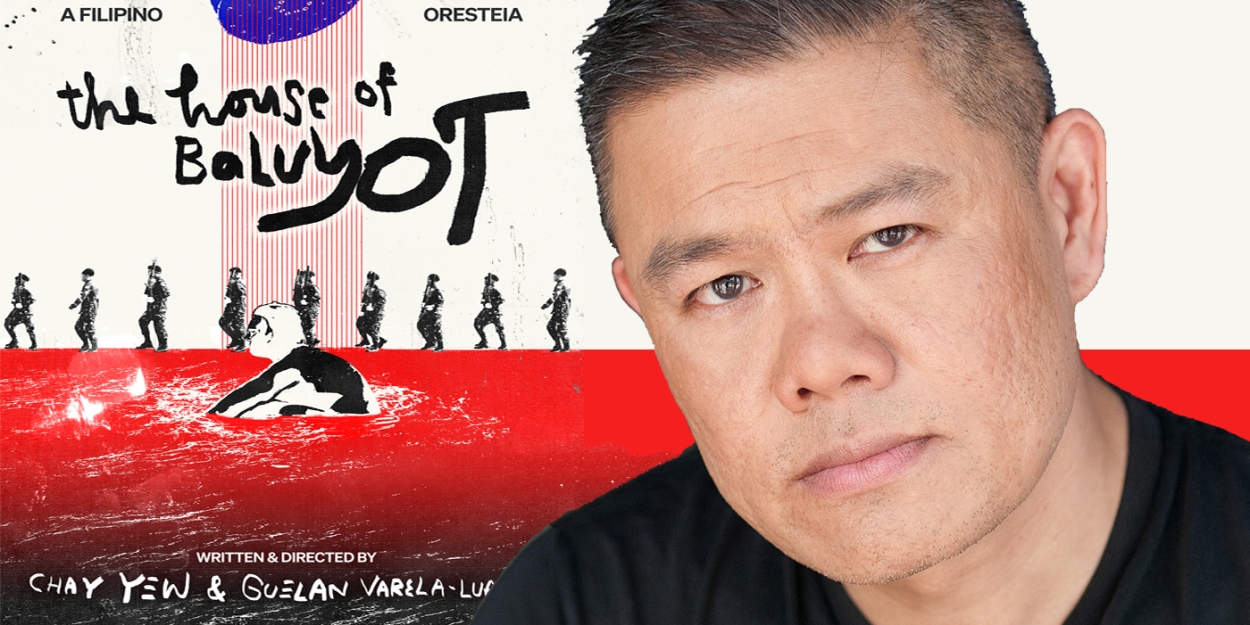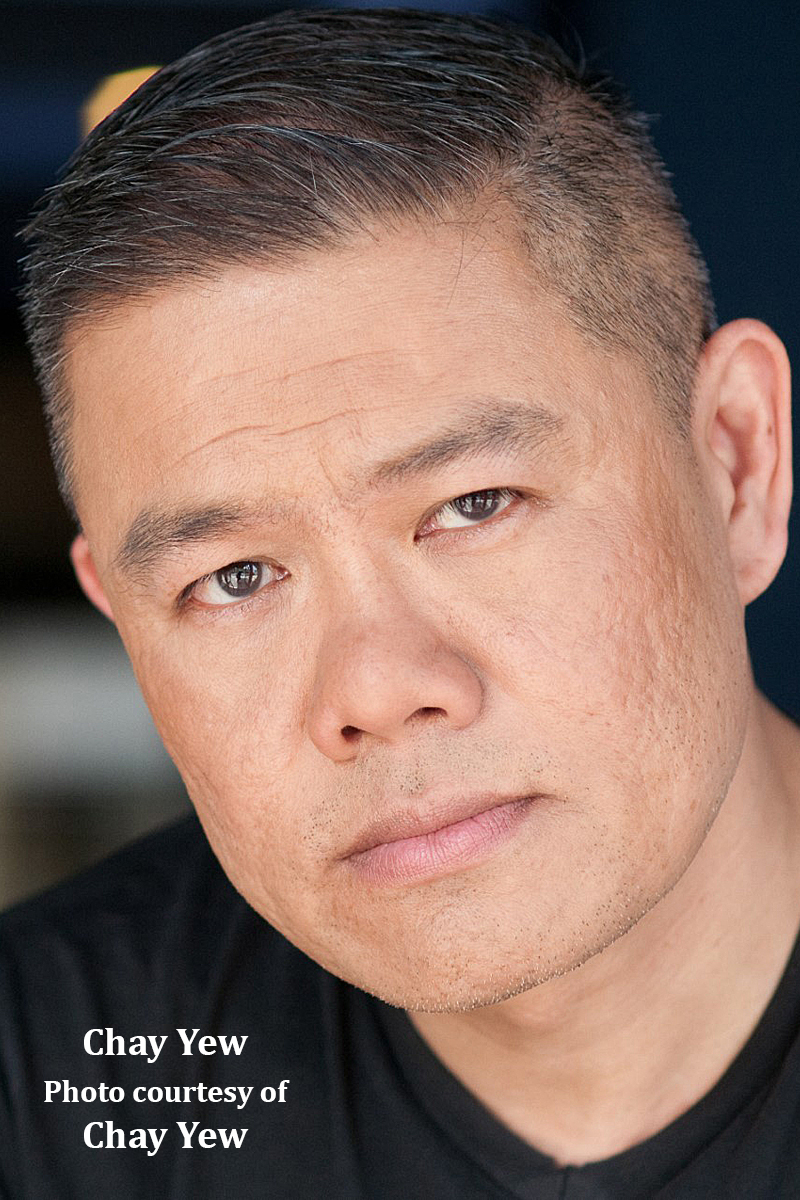Interview: Playwright/Director Chay Yew Leads the Charge for Filipino Inclusion with THE HOUSE OF BALUYOT: A FILIPINO ORESTEIA
Next up at the Getty Villa Theater Lab, Guelan Varela-Luarca & Chay Yew’s The House of Baluyot: A Filipino Oresteia for two performances only November 18th & 19th


Next up at the Getty Villa Theater Lab, Guelan Varela-Luarca and Chay Yew’s The House of Baluyot: A Filipino Oresteia for two performances only November 18th and 19th. Guelan and Chay also direct this work-in-progress with the cast of Ramon De Ocampo, Tess Lina, Zandi de Jesus, Reggie Lee, Andres Paul Ramacho and Amielynn Abellera.
Chay found some time from prepping his many, many directorial obligations to answer a few pf my queries.
Thank you for taking the time for this interview, Chay!
What cosmic forces initially brought you and Guelan together to co-write this project?
The two cosmic forces are Ralph Flores at the Getty, and Christine Scarfuto at Hunter College. During the pandemic, I had spent most of my time devouring anything related to the Oresteia, the Trojan War, and the Odyssey. When Ralph reached out with an opportunity to develop a new project at the Getty, I immediately thought to approach the Oresteia. By that time, I was already working on a draft of my adaptation. When Christine invited me to direct a new play reading by Guelan, who’s a graduate student in playwriting there, I fell in love with his voice. We spent much time discussing the Greek classics and I jumped on an immediate instinct to collaborate with him on the Oresteia. We switched gears on my adaptation and used Ralph’s and the Getty’s resources to commission a new adaptation, focusing this new work on the Filipino American community in San Diego.
What was your process in co-writing? Separate first, then together to throw out and compare ideas?
I don’t know if there is a template for this kind of collaboration. The one and only time when I somewhat experienced this model — and unofficially — was when I directed my old friend Robert O’Hara’s play Antebellum at Woolly Mammoth. I was a little apprehensive as we were both playwrights and directors. I thought we might have a “Whatever Happened to Baby Jane?” catfight during rehearsals. But it turned out to be a tremendously rewarding process to have, not one but, two directors and playwrights in the room.
Given Guelan and my disposition, there was always a readiness to dialogue and for transparency. I caught my first glimpse into the nature of our collaboration when I directed his play at Hunter. I knew we’d be able to work together easily as the priority is never our egos, but what the play wanted to say. We also share the same passions and politics, and perhaps that’s a key to any collaboration: shared interests and passions. Not that it’s impossible but it might be more challenging to have a process like this with someone who’s diametrically opposed to all you find important. Also, I always enjoy creating the world of the play with playwrights, given my experience directing new plays.
For this process, we decided first to talk about what we wanted to say and highlight from Aeschylus’ Oresteia. We also discussed how we wanted to reframe this epic play and make it more of a free adaptation, using the skeletal plot as a frame, and also to add to the story where they have been many fascinating character and plot “holes” in the original.
After discussing the world of the play and its characters, one of us would write the play first and then pass it off to the other. It would be like a game of basketball. We’d then discuss what we learned about the draft. And the cycle begins again and again and again. In a way, there is a bit of an Irene Fornes playwriting exercise in this process. Through each successive draft, both of us learn more about the world of play when we receive each other’s drafts. Sometimes there is a particular scene where two of us would write, and then we’d collapse it together to see if it works dramatically. Or when one of us would be stumped by a scene, the other would take the lead. I have to say that one of the joys of this partnership has been our conversations about, dramaturgy, story and the Oresteia. It’s been a fulfilling collaboration.
I think the two of us being geeks of the Greek theatre, this was an opportunity for us to revisit this classic, interpreting it through the Filipino American lens, as there are currently far and too few Asian retellings of this epic work.
How have you divvied up the directing responsibilities?
I have no idea as yet. It’s probably going to be the same way we have been writing. But Guelan wanted me to take the wheel first. And when he’s ready to add to the process, he will take the wheel. I think my process with Robert O’Hara on Antebellum will be a great template for us.
What has the gestation period of House of Baluyot been?
I would say it’s been about eight or nine months. I guess it’s like a creative pregnancy with the usual labor pains.
Have you worked with any of this play’s cast or creatives before?
I worked recently with Tess Lina in the world premiere of Charlie Oh’s Coleman 72 at South Coast Rep last spring, and prior to that, I directed her on Alice Tuan’s Last of the Suns at Ma Yi Theatre. Reggie Lee was in one of my early directing / devised projects A Beautiful Country with Cornerstone Theatre Company, East West Players and Center Theatre Group. Ramon and I had done a few readings and have often wanted to find a project for us to collaborate. The rest of the company are new to me and I’m so thrilled to discover this new project with them.
When does your script become set in stone? Following your first public read-through? After dress rehearsal? Post-opening night curtain?
Nothing is ever set in stone. Right now, we are on draft seven. We are about to hear this draft for the first time on Zoom. When we convene for rehearsals at the Getty, we would probably have another one or two more passes, hopefully deepening the characters, the themes of the play, and the plot. A new adaptation or a new play is a constant work-in-progress. It evolves with every draft and process. It’s the reason why I still love working on new plays.
Your long list of plays that you wrote is only outshone by your very prolific directing resume. What did you want to be growing up? Writer? Director? Producer? Lawyer?
Actually, an actor. When I first acted, I realized how much I hated memorizing lines, or how I was terrible at memorizing lines. Also, the repetition of eight performances a week didn’t quite appeal to me. As a result of that experience, I value actors and all that they do.
What was the creative landscape like for an Asian playwright when you wrote your first play As If He Hears in 1988?
It was definitely different as my first play was banned by the Singapore government for the positive portray of gay characters, undermining the country's "family values." Then it was also one of the first few plays written by a Singaporean playwright for Singaporeans. Since then, Singaporean theatre has evolved tremendously, giving rise to many incredible voices and theatre artists.
When I started writing plays in the United States, there were few venues that would produce Asian American plays. The theatre that first gave me a home and a community was East West Players. Once my work was produced there, I was able to grow and be challenged as an artist. I have Tim Dang, the then artistic director, to thank for this. I learned to direct and produce in that wonderful theatre. As a result, I was fortunate to have other doors opened to me. It was still a slog then. I can’t tell you the many times I’ve gotten a response from other theatres, saying “We love your play, but we don’t have any Asian actors, so we can’t produce your play. It’d be too costly.” And that was a three-hander.
I remember The Public Theater in New York was the only theatre that committed to giving one slot to an Asian American voice. That was in the 90’s. In the early 2010’s, there was a theatre season in New York that didn’t have any works of color. These days, I’m extremely heartened that there are more spaces and opportunities to experience a more diverse American experience through artists and works.
Any Asian playwrights or directors that you looked up to in your youth and early career?
David Henry Hwang has been a remarkable force in my life and for many other AAPI theatre artists. He’s opened many doors for us, and we are proud to stand on his shoulders. His immense gift of story, community and politics have largely shaped my artistry. I can't thank him enough. I hope to repay David’s generosity and leadership by doing the same for future generations of AAPI theatre artists and leaders.
Do you have some new play ideas percolating in your brain?
Yes, I do. They also include several musicals and adaptations. That’s all I can say for now.
What’s next after House of Baluyot for Chay Yew?
I'm extremely grateful for a busy winter and spring. I will be directing the world premieres of Karen Zacarias’ adaptation of The Age of Innocence at The Old Globe, and Jesús Valles’ Bathhouse.pptx at the Flea; remounting Pulitzer Prize finalist Kristina Wong’s Sweatshop Overlord at American Conservatory Theatre and Alaudin Ullah’s Dishwashers Dreams at Merrimack Repertory Theatre; helming the New York premiere of Huang Ruo’s and David Henry Hwang’s opera American Soldier at the Perelman, and South Pacific at Goodspeed Opera. Somehow these seemingly disparate projects give voice and visibility to community and explore the current state of our nation and antiquated societal structures which need to be restructured and rebuilt for future generations.
Thank you again, Chay! I look forward to seeing your take on Aeschylus’ Oresteia.
For tickets to the November 18th or 19th performances of The House of Baluyot: A Filipino Oresteia. Click on the button below:
Comments
Videos

